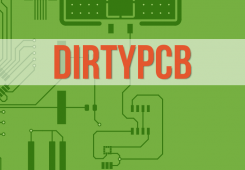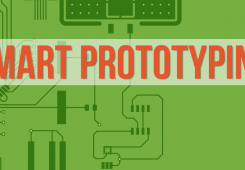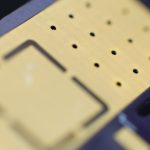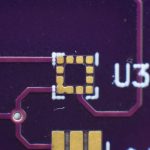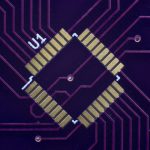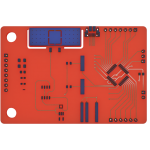Electroless Nickel Immersion Gold
Synonyms: ENIG, Immersion Gold
Electroless Nickel Immersion Gold Definition
Electroless Nickel Immersion Gold (ENIG), is a surface finish applied to exposed copper in order to reduce the potential for tarnish and pad degradation, while providing a suitable surface for accepting molten solder.
The ENIG surface finish process starts by meticulously cleaning the exposed copper after the solder mask has been applied. With the copper cleaned of any impurities, the surface is microetched to establish a surface structure ready for application of a palladium catalyst. The catalyst is added through by bathing the PCB in a solution of palladium sulfate. With the palladium applied, the PCB is cleaned again and then submitted to a bath in a nickel phosphate solution which plates a layer of metallic nickel over the catalyzed copper. After a subsequent round of cleaning, the PCB is then immersed into the “gold bath” of gold salt and potassium gold cyanide, which causes metallic gold to bond to the nickel plating.
Because of the immersion / liquid deposition process, ENIG provides a very consist surface, with uniform flatness far greater than can be achieved with HASL processes. The gold is also an excellent electrical conductor and provides superior protection against tarnish. The nickel provides a protective coating to the copper as well, bonding readily to solder. Since the process involves building up fine molecular layers of protection on the copper, it results in typical ENIG layer thicknesses of 0.075 to 0.125 microns (a sheet of paper is about 100 microns). Because of the subsequent flatness and thinness, it is an excellent surface treatment for plated through hole and BGA footprints, where a HASL finish would likely fill or clog the footprint.
ENIG is one of the more expensive surface finish processes due to the cost of the raw materials involved and the labor intensive steps necessary for it’s application. It is also subject to a chemical phenomenon called “black pad”, that can result in a phosphorous contamination occurring between the gold and nickel layers, if insufficient care is taken during the cleaning processes.
Electroless Nickel Immersion Gold Examples
- Copper Pour with ENIG
- QFN Footprint
- Pad Thickness
- QFP Footprint
- Surface Finish Areas in Blue
Further Reading
ENIG and the Plating Process (pg. 58-62)


